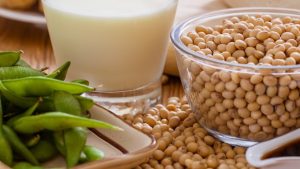
In this series, we ask dietitians across Canada to answer your questions on nutrition and dietary support.
We recently spoke with Mun Cho, a registered dietitian and food allergy mom of two based in Ontario.
This month, Mun answers a question on food allergy and protein sources.
How can you ensure your child eats enough protein if they have a food allergy?
When a child has a food allergy, there can be nutritional deficiencies resulting from food restrictions. A well-planned diet can help reduce the risk of such deficiencies. By eating a wide variety of protein-rich foods, most kids with food allergy can get enough of this important nutrient.
While most food contains some level of protein, these foods have high amounts:
- Meats and poultry
- Eggs
- Fish (e.g., trout, salmon)
- Crustaceans (e.g., lobster, shrimp) and molluscs (e.g., scallops, clams), sometimes collectively referred to as shellfish
- Tree nuts (e.g., almond, walnut)
- Seeds (e.g., pumpkin, sunflower)
- Tofu
- Lentils and other legumes (e.g., chickpeas, black beans, kidney beans)
- Milk, yogurt, cheese (note: these contain little iron, so relying too much on dairy sources for protein could increase the risk of iron deficiency)
Protein is essential for a child’s physical growth and brain development; it is made up of 20 amino acids. Our bodies produce 11 types of amino acids, and we must get the other 9 types, called essential amino acids, from our diet since the body cannot make them. Meats, poultry, fish, eggs, and dairy products, like milk, yogurt and cheese, contain all of the essential amino acids and are considered as complete proteins.
With the exception of certain foods like soy and quinoa, most plant sources are missing one or more of the essential amino acids, making them incomplete proteins. This does not mean that plant foods are not great sources of protein – you just have to combine different types of food to get all 9 amino acids (e.g., rice with beans, corn chips with hummus, chili with nuts or seeds).
Here are suggestions for protein sources, depending on your child’s food allergy, and ingredient substitution ideas:
Peanut or tree nut allergy:

Peanuts and tree nuts are good sources of protein. If your child is allergic to peanuts but can safely eat tree nuts and vice versa (allergic to tree nuts, but can eat peanuts), then you can substitute one for the other. Seeds (e.g., pumpkin, sunflower) are also great alternatives. Soy butter and seed butters are excellent substitutes for peanut and nut butters like almond or cashew.
Fish allergy or crustacean and mollusc allergies (shellfish):

In addition to providing protein, fish and shellfish are excellent sources of omega-3 fatty acids, iron, zinc, B-vitamins, and iodine. A child with a fish or shellfish allergy can get enough protein, along with iron, zinc and B-vitamins, by eating meats, poultry and eggs. Omega-3 can be obtained from fortified foods or algae-based supplements while iodine can be obtained from iodized salt.
Egg allergy:

Kids with an egg allergy can generally consume enough protein by eating other protein-rich foods. An egg allergy, however, can be tricky as eggs serve as a binder, leavening or emulsifying agent in many recipes. A substitute for egg can be a fruit or vegetable puree, commercial egg replacement product, ground flax mixed with water, xanthan gum, agar or aquafaba (e.g., liquid in canned chickpeas).
Soy allergy:

Kids with a soy allergy can still consume enough protein by eating a variety of other foods that are high in protein. A soy allergy is particularly challenging for those who are also vegetarian or vegan since soy is commonly used in meat substitutes. Other vegetarian options could include food products made with peas, beans, lentils or quinoa.
If your child has multiple food allergies or other medical condition(s) requiring additional food restrictions, it’s helpful to consult with a Registered Dietitian for personalized guidance.
Learn more
Learn more about protein sources in our Ask the dietitian article on peanut allergy and a plant-based diet.
Find substitutions for the priority food allergens in this handy substitution chart that you can download.
Do you have a question you’d like to ask a dietitian in the months to come? If so, please send it along to us at info@foodallergycanada.ca.
Please note: The dietitians featured in this series answer questions on general topics, please talk to your doctor if you have questions about your own health or the health of your child.
Tags: ask the dietitian, Ask the expert
